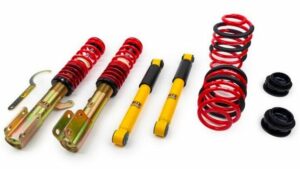Some SUVs have 4 wheel drive. Others have “all-wheel drive”. OK, cool, aren’t these basically the same thing? Or are they different? Why should you know the difference between all-wheel drive and 4×4? Well, let me give you a little knowledge brother.
All-wheel drive (AWD) is what most people need. It is basically traction control for all four wheels. When you are driving your AWD vehicle will be pulled with the front two wheels most of the time.
BUT, when the front two wheels slip and break traction, your vehicle’s computer will sense that and say, “Hey, we’re losing power to this wheel. Send power to another wheel!” So the computer will enable another wheel or two to be powered by the motor.
So when one tire slips another tire makes up the difference so you’re always getting maximum traction to potentially every wheel.
Table of Contents
Is AWD The Same As 4×4?
No! AWD is not the same as 4×4 or 4WD. AWD is an automatic adjustment of power to the wheels that get the most traction. 4×4 or 4WD will send power to all 4 wheels equally.
Take a Toyota RAV4 or any Subaru. These vehicles have all-wheel drive. Take them offroading and drive on some crazy uneven roads. If you start driving on only three wheels, the fourth wheel that pops up off the ground will do one of two things:
- With all-wheel drive, the wheel in the air will stop spinning and the computer will send the power to the other three wheels that have traction.
- With a 4×4 or 4-wheel drive, the wheel in the air will keep spinning at the same speed as the wheel on the opposite side, or the same as all four wheels depending on what type of locking differentials you have.
So which is better between all-wheel drive and 4×4? Well, it depends on what you want. Some drivers claim they have more control with a 4×4 and others like the hands-off ability of all-wheel drive.
Typically the casual weekend warrior will do just fine with AWD. But if you are attempting more challenging terrain a 4×4 may get you the performance you may need.
What Are The Disadvantages Of All Wheel Drive?
All-wheel drive can save lives. It can help you drive safer. But it’s not a perfect system. There are some disadvantages with AWD you need to consider:
- Typically 1 MPG worse
- AWD means more parts which mean more maintenance and more potential failures
- Higher vehicle purchase price
It is up to you to decide whether these factors are worth more than the value of AWD.
What Happens If You Drive In 4 Wheel Drive On Dry Pavement?
4 wheel drive on dry pavement is a bad idea. You can’t drive as fast and when you turn your truck you may dramatically speed up tire wear and uneven tire wear. Or worse yet you can even put enough stress on your differentials where they could be damaged or just simply break. That is not ideal.
When you are switching between off-roading and driving on the pavement you will want to switch back from 4 wheel drive to 2 wheel drive immediately.
Does AWD Help On Ice?
Yes, AWD does help with ice. But if you are driving on ONLY ice, pure ice, AWD will not help you. You will just slide downhill or where your momentum will guide you. AWD will help if you can get any type of traction. So when you have AWD instead of 2 wheels struggling for traction you have twice as much opportunity to get some grip on the road.
AWD usually gives you better handling on icy conditions. Pure ice, once again, will require additional traction from your tires in the form of chains. But in icy conditions, you will be much more prepared to safely handle traversing those conditions. It would be wise to carry a set of chains that fit your tires.
What about the rain? How does AWD help in rain? All-wheel-drive will instantly give your car a dramatic improvement when driving in the rain. Any type of incline will cause your car to skid out in the rain. You can slide out easily turning especially if you are driving a heavier truck.
You will also notice the all-wheel drive helps with hydroplaning. All-wheel drive will send power to all four wheels and will give your car an effortless driving experience. Driving with AWD in rain will feel like you are driving in sunny weather. An all-wheel-drive vehicle really does give you that much more control in rain.
Is AWD More Expensive To Maintain?
Yes, AWD is more expensive to maintain. Compared to 4×4, AWD has fewer parts, but some AWD is computer controlled and this can cause issues if you have reliability issues or if you bought a lemon. Most AWD is reliable and maintenance is minimal.
AWD compared to 2WD has extra parts and fluids needed to change every few years depending on mileage. There is fluid in the extra differentials and transfer cases that need to be changed. There are additional sensors and tubing that deteriorate. If damage occurs you would need to replace drive shafts etc.
In the grand scheme of things, the additional AWD maintenance is minimal. It usually requires fluid changing during an overhaul or scheduled maintenance occurring around 100,000 miles. Reliability across most brands is solid. If you are weighing the benefits versus the added cost, the scale would be pegged in favor of the benefits.
Is It Bad To Drive In 4 Wheel Drive On The Highway?
Yes, you can but it is absolutely not recommended. When you are on the pavement you want to switch from 4WD to 2WD pretty quick or you could risk damaging your diffs or axles. 4WD high is better than low otherwise you can overheat and really ruin your diffs quickly.
How Do You Rotate Tires On AWD?
Unless you have different sized tires for the rear and front you can easily rotate your tires on AWD as you would for front/rear-wheel drive or AWD or whatever:
- Left rear > right front
- Right rear > left front
- Right front > left rear
- Left front > right rear
Switch the backs to the fronts and opposite sides. Easy peasy.
Do AWD Tires Wear Faster?
Yes, AWD tires wear faster because they are all being powered directly from your vehicle’s engine. When they are powered and not free-spinning tires they are using more energy overall and this causes the tire rubber to wear quicker. You will have much better handling when driving but understand this comes at a cost in MPG and usable tire life.
Can You Turn AWD On And Off?
No, AWD is pretty much 100% in vehicles. AWD works independently through the computer to manage traction between 2, 3, or 4 wheels. So AWD will not always be a 4 wheel powered system. This way AWD is always on and available when you need it.
There are some drivers that have removed or added a fuse to disable their AWD system. If you are interested in this search online (Not here, I don’t advocate things like that) for your specific make and model to find out if it can be done safely.
Can 2WD Tow More Than 4WD?
Yes, 2WD can tow more than 4WD models because with a four-wheel-drive system you have an extra drive train going to the front wheels (on modern vehicles). This extra weight adds to the weight of the truck, therefore lowering the towing weight limit. Sometimes the difference can be hundreds and hundreds of pounds.
All-wheel drive and four-wheel drive are both instant upgrades compare to two-wheel drive operations for the majority of drivers. You will have so much more control AWD and 4WD, no question.
There is not a huge difference between all-wheel drive and 4×4 but there are some things you will need to take into consideration if this is the deciding factor when deciding on a vehicle.
Generally for off-road use, you may want to choose 4WD instead of AWD. You will have more control and generally more power available. Four-wheel drive is heavier and costlier to maintain and it does not perform on pavement nearly as well as 2WD or AWD.
So, if you are driving minimally on unpaved roads AWD is a much better option. You can have it on all the time and forget about it. It will automatically switch on when you need it and turn off when you don’t.
So take all these things into consideration when weighing the difference between all-wheel drive and 4×4 and how these types best fit your driving style and habits.
Thanks for reading and stay dirty

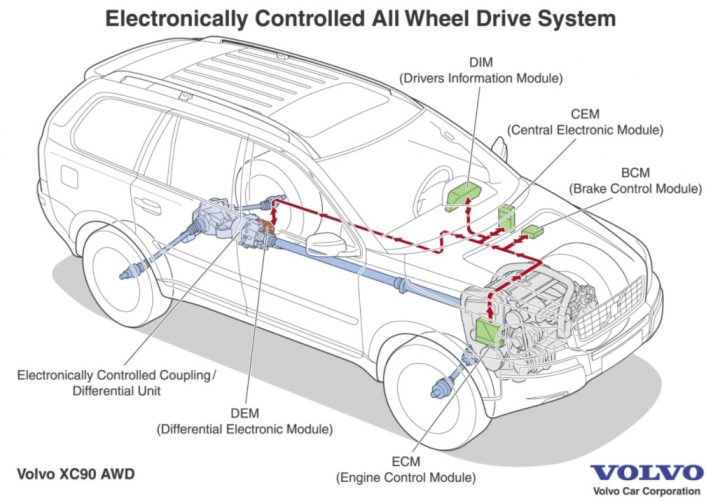
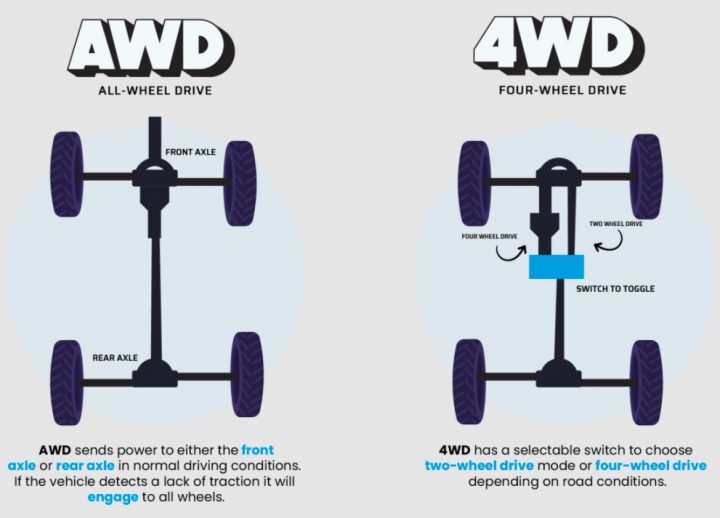


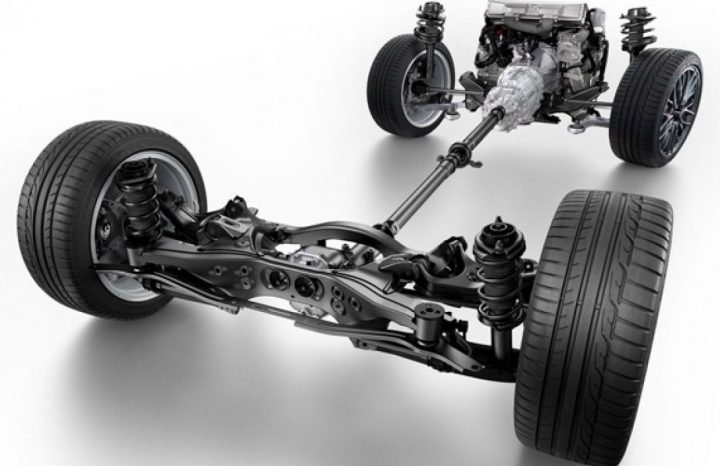
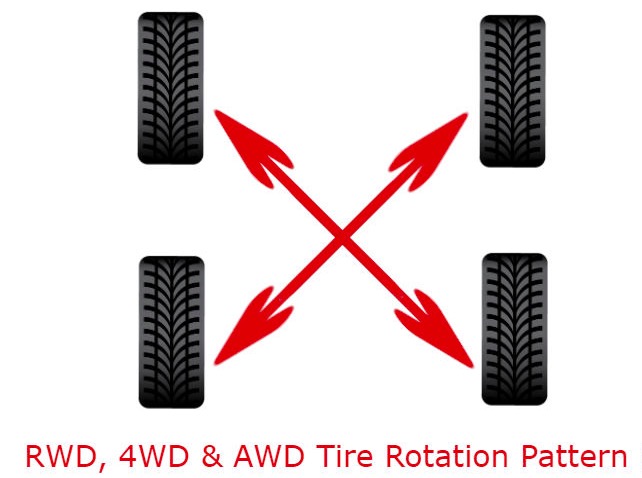
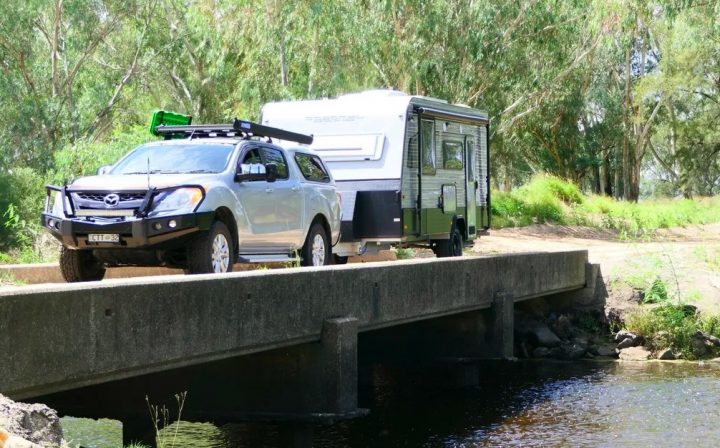

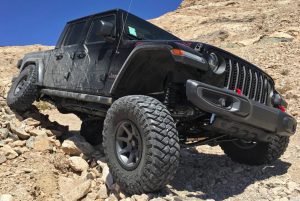
![The 16 Most Aggressive All Terrain Tires [2022] reall aggressive all terrain tires on a Jeep](https://149868043.v2.pressablecdn.com/wp-content/uploads/2020/03/slide1-e1585156691843-300x150.jpg)
